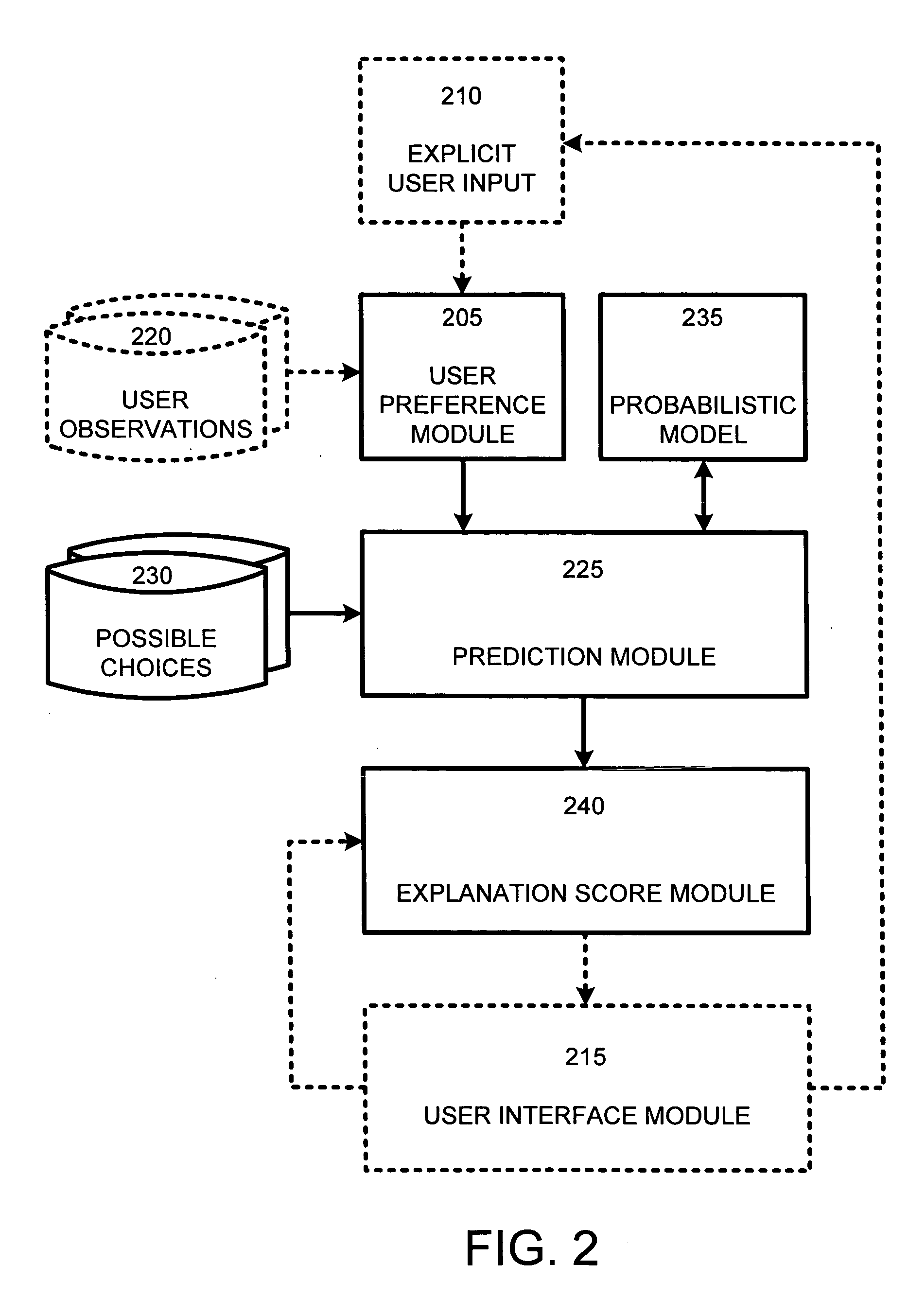System and process for automatically explaining probabilistic predictions
a probabilistic prediction and automatic explanation technology, applied in the field of automatic explanation of probabilistic predictions, can solve the problems of system not being able to determine which other movies from the set m= are available, not useful for determining the contribution or influence of particular users, and failing to answer the question as to why users might want to watch movies
- Summary
- Abstract
- Description
- Claims
- Application Information
AI Technical Summary
Benefits of technology
Problems solved by technology
Method used
Image
Examples
working example
[0059] A simple working example, as follows, serves to illustrate a system and process according to the present invention. Specifically, given a conventional probabilistic model for recommending one of four books, and given that a user has read the fourth book, but not the first, second or third book, the probabilities that a user might choose any of the first three books can be described by Equations 4, 5 and 6 as follows, where a 0 indicates that the book has not been read, and a 1 indicates that the book has been read:
p(Book1=1|Book2=0, Book3=0, Book4=1) Eqn. 4
p(Book2=1|Book1=0, Book3=0, Book4=1) Eqn. 5
p(Book3=1|Book1=0, Book2=0, Book4=1) Eqn. 6
Further, once these probabilities have been determined, it is a simple matter to choose the book having the highest probability and recommend that book to the user. However, the next step, in accordance with the present invention is to explain why the particular book was recommended to the user.
[0060] Specifically, given Equations...
PUM
 Login to View More
Login to View More Abstract
Description
Claims
Application Information
 Login to View More
Login to View More - R&D
- Intellectual Property
- Life Sciences
- Materials
- Tech Scout
- Unparalleled Data Quality
- Higher Quality Content
- 60% Fewer Hallucinations
Browse by: Latest US Patents, China's latest patents, Technical Efficacy Thesaurus, Application Domain, Technology Topic, Popular Technical Reports.
© 2025 PatSnap. All rights reserved.Legal|Privacy policy|Modern Slavery Act Transparency Statement|Sitemap|About US| Contact US: help@patsnap.com



